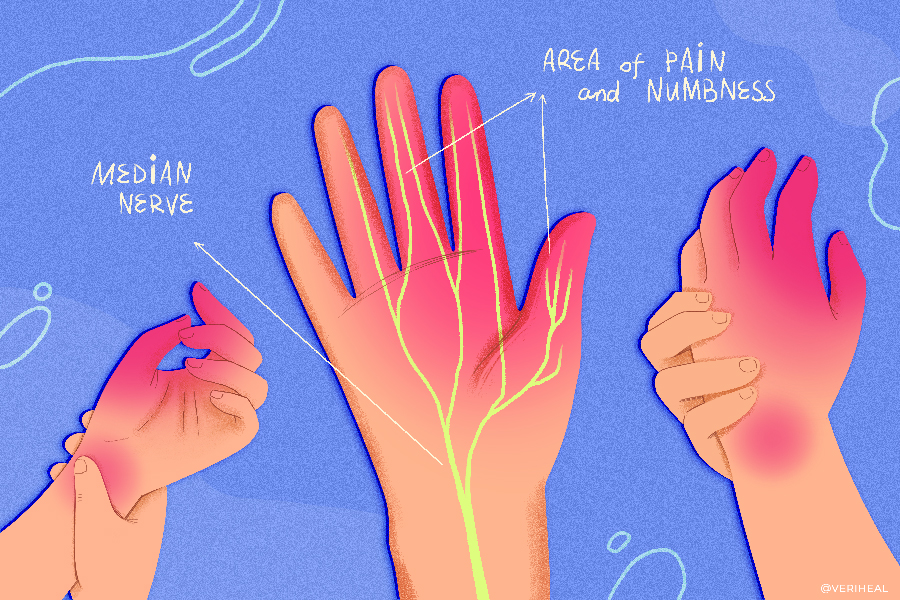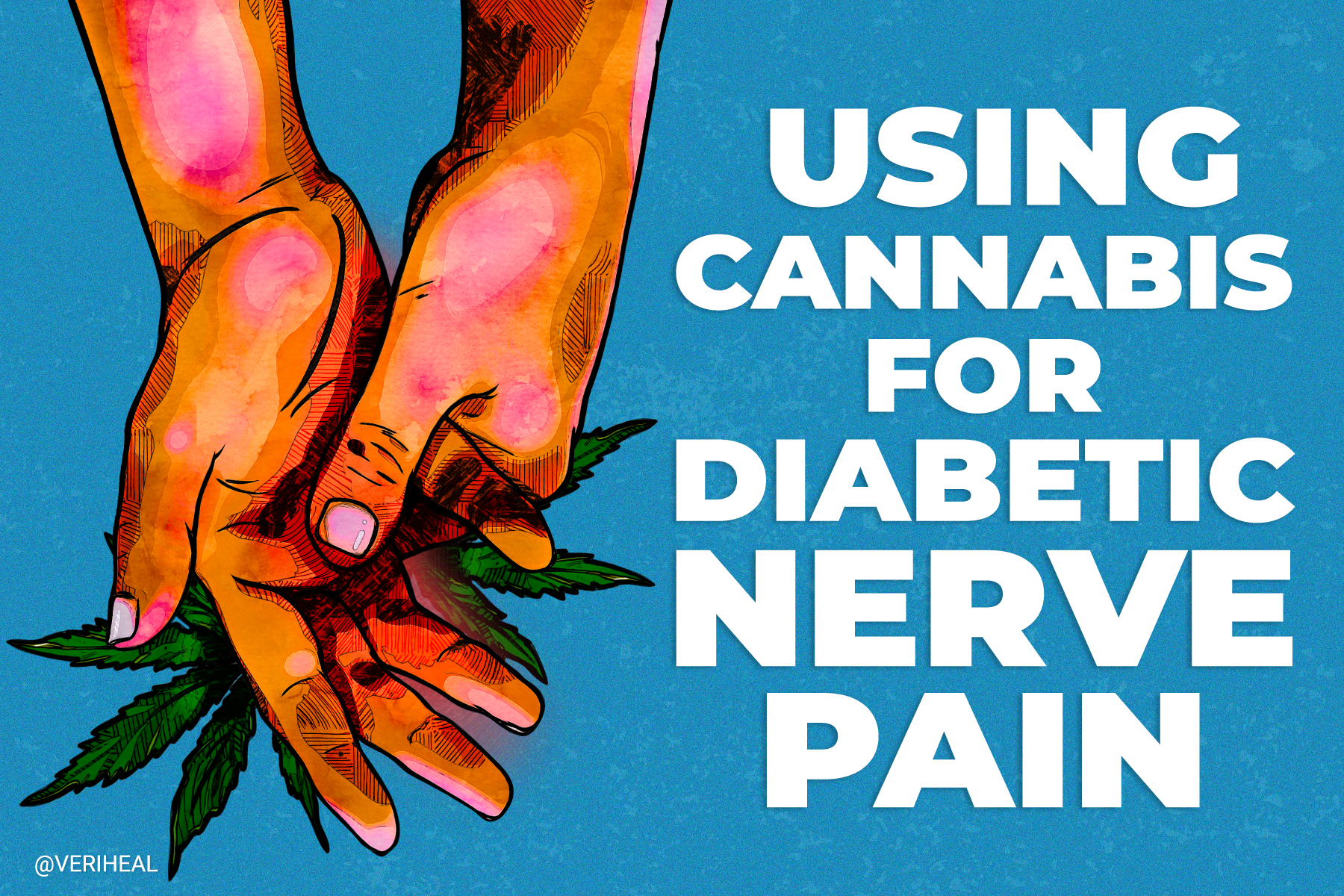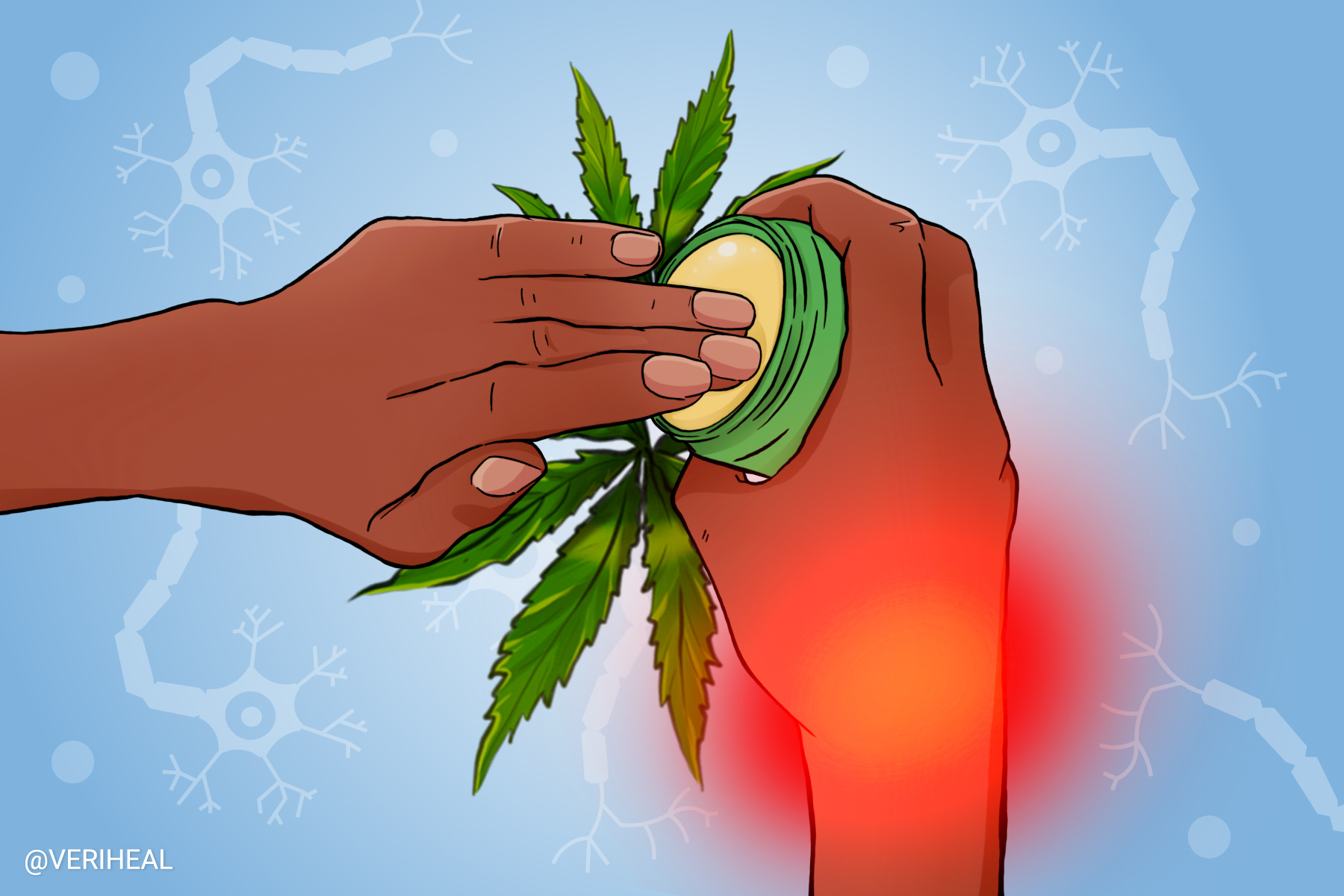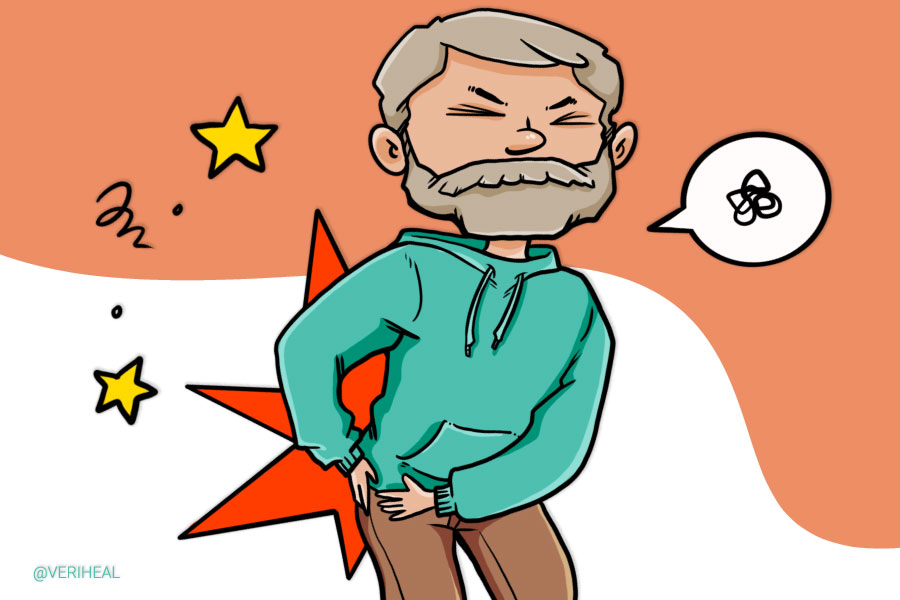Can Marijuana Help Patients Suffering from Carpal Tunnel?

- Why Use Medical Cannabis for Carpal Tunnel
- Options for Treating Wrist Nerve Pain
- Carpal Tunnel & Other Tunnel Syndromes
Like other forms of neuropathy, carpal tunnel syndrome can be very painful for patients who are experiencing numbness, tingling, and shooting nerve pain in their hands or wrists. Many of these patients struggle with worsening pain, despite wearing braces or doing physical therapy.
For patients who do not want to take medications such as corticosteroids, over-the-counter nonsteroidal anti-inflammatory drugs (NSAIDs), or opioids, or those who don’t get enough relief from prescription medications, taking cannabis for the pain caused by carpal tunnel may be the answer. Unfortunately, there are not any studies that specifically address cannabinoids as a treatment for carpal tunnel-induced neuropathy, but there are several good studies that cite cannabis as a promising treatment for neuropathic pain and chronic pain(11)(13)(17).
Cannabis is made up of cannabinoids including Δ9-tetrahydrocannabinol (THC) and cannabidiol (CBD). They work to target neuropathy, also known as nerve pain, through the body’s endocannabinoid system (ECS). This system is made up of fat-based neurotransmitters that are activated by the cannabinoid receptors known as CB1 and CB2. CB1 receptors are primarily in the central nervous system while CB2 receptors can be found in immune cells, skin, and other organs in the body. Cannabinoids can also target various other cellular receptors that are sources of inflammation and pain (18).
Upon activation of CB1 and CB2 receptors, the neurotransmitter anandamide (AEA) is increased. This causes astrocytes, one of the main types of cells found in the central nervous system, to secrete a protein that increases nerve cell growth (18). This is an important feature to potentially help with permanent nerve pain, numbness, and tingling sensations in patients with neuropathy, including carpal tunnel syndrome. Large-scale, randomized control trials are still needed to determine the efficacy and long-term effects of cannabinoids and cannabis strains specifically for carpal tunnel syndrome and other conditions.
Please check out our guide on the endocannabinoid system for information about how it works.
Why Use Medical Cannabis for Carpal Tunnel?
While taking medical cannabis for your carpal tunnel syndrome, you may experience the following cannabis-related benefits:
- Reduced chronic pain (16)
- Improved peripheral neuropathy symptoms (17)
- Mood Improvements (16)
- Improved sleep (15)
- Anti-inflammatory effects
Options for Treating Wrist Nerve Pain
Various methods of taking cannabis including inhalation, creams, tinctures, edibles, and transdermal patches can vary in effectiveness depending on your own body’s metabolism. It is important to start with lower doses of cannabis and work yourself to higher doses if needed. For more information about nerve symptoms associated with carpal tunnel syndrome, please check out our guides on neuropathy and inflammation for more information.
You should consult a medical professional first if you are worried about hand or wrist pain, as it could potentially represent a more serious condition requiring workup and treatment. Ongoing carpal tunnel syndrome that is left untreated or inappropriately treated may eventually require surgery or progress to permanent neuromuscular disability (6).
Carpal Tunnel & Other Tunnel Syndromes
There are three different tunnel syndromes that occur in the arm and cause similar tingling, numbness, and pain. They affect the median, ulnar, and radial nerves in the arms. More information about the different tunnel syndromes is listed below:
Carpal Tunnel Syndrome
Symptoms of carpal tunnel syndrome happen when the median nerve is squeezed or compressed as it travels through the wrist where the carpal tunnel is located. This is a type of entrapment neuropathy. The carpal tunnel is a narrow passage in the wrist in between the carpal bones where the nerves enter the hand. In most patients carpal tunnel gets worse over time, with symptoms commonly relieved by NSAIDs, steroid injections, physical therapy, and/or a splint to prevent ongoing nerve damage (4). Weight loss is also encouraged. Many patients have surgery in order to unblock the pinched-off nerve.
Carpal tunnel syndrome is caused by (4):
- The carpal tunnel becomes narrowed.
- Tissues called the synovium, which surrounds the flexor tendons in the wrist, swell and put pressure on the median nerve.
- Carpal tunnel syndrome can be hereditary due to the carpal tunnel just genetically being small.
- Repeating the same hand or wrist motions that may aggravate the tendons in the wrist, causing swelling that puts pressure on the median nerve.
- Doing activities that involve extreme bending of the wrist or hand for prolonged periods of time.
- Hormonal changes such as pregnancy can cause swelling and pinch the median nerve.
- Diabetes, obesity, or weight gain
- Rheumatoid arthritis
- Thyroid gland imbalances
Cubital Tunnel Syndrome
Cubital tunnel syndrome occurs when the ulnar nerve that runs down the shoulder and to the hand gets pinched at the elbow. The main signs of this tunnel syndrome are tingling and numbness in the hands and fingers. Some patients may experience soft tissue pain or joint pain in the elbow as well. The ulnar nerve is what gives us feeling in the little finger and half of the ring finger on both the palm of the hand and the backside of the hand (14).
Cubital Tunnel Syndrome can be caused by (14):
- Keeping your elbow bent for long periods of time or repeatedly bending the elbow.
- In some patients, the nerve slides out of proper positioning and this movement over time irritates the nerve.
- Leaning on your elbow for long periods of time.
- Fluid buildup in the elbow can cause swelling and lead to cubital tunnel syndrome.
Radial Tunnel Syndrome
This syndrome occurs when the radial gets pinched, usually at the elbow (10). The radial nerve runs from the neck to the back of the upper arm. It crosses the back of the elbow and goes into the forearm and hand. When the radial nerve is pinched through the radial tunnel, it causes fatigue or dull, achy pain at the top of the forearm when it is being used. It can also cause symptoms on the back of the hand or wrist. Radial tunnel syndrome affects the muscles and soft tissues, not the nerves, so it does not cause tingling and numbness.
The causes of radial tunnel syndrome include (10):
- Anytime the radial nerve gets pinched from the neck to the hand.
- Overuse of the arms by pushing and pulling objects.
- Overuse of the hand by gripping, pinching, or bending the wrist.
- Repetitive movements such as twisting the arm or wrist.
Note: Veriheal does not intend to give this as professional medical advice. Do not attempt to self-diagnose or prescribe treatment based on the information provided on this page. Always consult a physician before making any decision on the treatment of a medical condition.
1. Carpal tunnel syndrome. (2021, January 26). Retrieved March 26, 2021, from https://medlineplus.gov/carpaltunnelsyndrome.html
2. Carpal tunnel syndrome. (n.d.). Retrieved March 26, 2021, from https://www.aans.org/en/Patients/Neurosurgical-Conditions-and-Treatments/Carpal-Tunnel-Syndrome
3. Carpal tunnel syndrome fact sheet. (n.d.). Retrieved March 26, 2021, from https://www.ninds.nih.gov/Disorders/Patient-Caregiver-Education/Fact-Sheets/Carpal-Tunnel-Syndrome-Fact-Sheet
4. Carpal tunnel syndrome – symptoms and treatment – orthoinfo – aaos. (n.d.). Retrieved March 26, 2021, from https://orthoinfo.aaos.org/en/diseases–conditions/carpal-tunnel-syndrome/
5. Jaggi, A. S., & Singh, N. (2011). Role of different brain areas in peripheral nerve injury-induced neuropathic pain. Brain Research, 1381,187-201. https://www.sciencedirect.com/science/article/abs/pii/S0006899311000102
6. Mayo Foundation for Medical Education and Research. (2021, July 14). Carpal tunnel syndrome. Mayo Clinic. https://www.mayoclinic.org/diseases-conditions/carpal-tunnel-syndrome/symptoms-causes/syc-20355603
7. McQuay H. J. (2010). More evidence cannabis can help in neuropathic pain. CMAJ : Canadian Medical Association journal = journal de l’Association medicale canadienne, 182(14), 1494–1495. https://www.ncbi.nlm.nih.gov/pmc/articles/PMC2950178/
8. Mücke, M., Phillips, T., Radbruch, L., Petzke, F., & Häuser, W. (2018). Cannabis-based medicines for chronic neuropathic pain in adults. The Cochrane database of systematic reviews, 3(3),CD012182. https://www.ncbi.nlm.nih.gov/pmc/articles/PMC6494210/
9. Portenoy R. K. (2000). Current pharmacotherapy of chronic pain. Journal of pain and symptom management, 19(1 Suppl), S16–S20. https://pubmed.ncbi.nlm.nih.gov/10687334/
10. Radial tunnel syndrome: Symptoms, causes & treatment. (n.d.). Retrieved March 26, 2021, from https://my.clevelandclinic.org/health/diseases/15658-radial-tunnel-syndrome
11. Russo, E. (2008). Cannabinoids in the management of difficult to treat pain. Therapeutics and Clinical Risk Management, Volume 4, 245–259. https://www.dovepress.com/cannabinoids-in-the-management-of-difficult-to-treat-pain-peer-reviewed-fulltext-article-TCRM
12. Tyree, G. A., Sarkar, R., Bellows, B. K., Ellis, R. J., Atkinson, J. H., Marcotte, T. D., . . . Grelotti, D. J. (2019). A cost-effectiveness model for adjunctive smoked cannabis in the treatment of chronic neuropathic pain. Cannabis and Cannabinoid Research, 4(1), 62-72. https://www.liebertpub.com/doi/10.1089/can.2018.0027
13. Tyree, G. A., Sarkar, R., Bellows, B. K., Ellis, R. J., Atkinson, J. H., Marcotte, T. D., Wallace, M. S., Grant, I., Shi, Y., Murphy, J. D., & Grelotti, D. J. (2019). A Cost-Effectiveness Model for Adjunctive Smoked Cannabis in the Treatment of Chronic Neuropathic Pain. Cannabis and cannabinoid research, 4(1), 62–72. https://www.ncbi.nlm.nih.gov/pmc/articles/PMC6446169/
14. Ulnar nerve entrapment at the elbow (cubital tunnel syndrome) – orthoinfo – aaos. (n.d.). Retrieved March 26, 2021, from https://orthoinfo.aaos.org/en/diseases–conditions/ulnar-nerve-entrapment-at-the-elbow-cubital-tunnel-syndrome
15. Ware, M. A., Wang, T., Shapiro, S., Robinson, A., Ducruet, T., Huynh, T., Gamsa, A., Bennett, G. J.,& Collet, J. P. (2010). Smoked cannabis for chronic neuropathic pain: a randomized controlled trial. CMAJ : Canadian Medical Association journal = journal de l’Association medicale canadienne, 182(14),E694–E701. https://www.ncbi.nlm.nih.gov/pmc/articles/PMC2950205/
16. Wilsey, B., Marcotte, T., Tsodikov, A., Millman, J., Bentley, H., Gouaux, B., & Fishman, S. (2008). A randomized, placebo-controlled, crossover trial of cannabis cigarettes in neuropathic pain. The journal of pain, 9(6),506–521. https://www.ncbi.nlm.nih.gov/pmc/articles/PMC4968043/
17. Xu, D. H., Cullen, B. D., Tang, M., & Fang, Y. (2020). The effectiveness of Topical Cannabidiol oil in symptomatic relief of peripheral Neuropathy of the lower extremities. Current Pharmaceutical Biotechnology, 21(5), 390–402. https://www.eurekaselect.com/177080/article
18. Nagarkatti, P., Pandey, R., Rieder, S. A., Hegde, V. L., & Nagarkatti, M. (2009). Cannabinoids as novel anti-inflammatory drugs. Future medicinal chemistry, 1(7), 1333–1349. https://www.ncbi.nlm.nih.gov/pmc/articles/PMC2828614/




